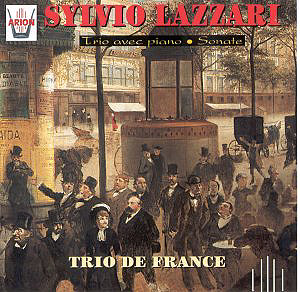Looking back over my haphazardly instinctive and aleatory
journey through music I owe a great deal to the knowledge and generosity
of friends - a generosity I have never adequately or in some cases at
all reciprocated - at least not in measure to my gain. Time perhaps
to mention a few names though there will be many inadvertent omissions.
First there is Paul Tozer to whom I owe most of my
initial musical experiences around an LP collection largely assembled
from sales at W H Smiths (a heavy reliance on Supraphon). Paul has his
own website where you can read chapters from his science fantasy novel.
Then comes Simon Allen from my years at Bristol. Simon stirred me into
going to live concerts at Bristol's Colston Hall and introduced me to
the still unmatched Leonard Bernstein version of Shostakovich Piano
Concerto No. 2. Richard D C Noble's mountainously inclusive archive
of radio tapes, LPs, 78s, CDs takes up much of the same rambling mansion
at Godalming which it continues to engulf. Hubert Culot (a fellow reviewer
here) has guided me towards the nooks and crannies of French-speaking
musical renaissance. Paul Bruyère has been an invaluably attentive
and highly literate guide through the dustier realms of the French musical
renaissance of the last century. Professor Roger Parsons at Southampton
has blessed me with many rare tapes taken down from Radio 3 and his
years in France when France Culture was still around as a radio station.
It was due to Paul Bruyère that I developed an interest in Lazzari
and to Roger that I was able to appreciate, through an ORTF tape, Lazzari's
1901 operatic tragedy La Lépreuse (still unrecorded commercially).
Lazzari was of Austro-Italian parentage and
spent most of his life in Paris. That said Brittany was the focus of
much of his musical inspiration. With the exception of the opera Mélaenis
(1913) all the operas were inspired by Brittany its beauty and its
wildness: classics examples include Le Sauteriot (1913) and La
Tour de Feu (1925). According to the notes the latter was the first
opera to employ cinema in its structure. This is incorrect. The first
such opera was Joseph Holbrooke's Dylan, Son of the Wave premiered
by Beecham in London in the early 1910s.
The Trio swoons and reels amid Schumann-like
lyricism. Into the music is also woven a Beethovenian turbulence jostling
with Mendelssohnian charm of such an order that it could easily find
a place in the salon. Speaking of Beethoven, there is one remarkable
echo in a major theme in the first movement. This is surging romance
of high order though I do feel that the themes lack the ultimate exalted
distinction. However there is much to engage amid the undulating cantabile
and Brahmsian tempest.
Cellist, Hervé Derrien withdraws for the Violin
Sonata leaving us to the ministrations of Jacques Duhem (violin)
and Madeleine Virlogeux. This work, written seven years after the trio
and in the same year as the string quartet (does anyone have a recording
of the quartet?), was taken up by Ysaÿe (the dedicatee) who performed
it over a thirty year period. This is a very songful piece with spiritual
affinity with Beethoven's Spring Sonata. It is a more personal piece
than the Trio. Certainly it is ambitious with a seventeen minute first
movement succeeded by two 10 minute movements: a lento and a
con fuoco. The lento is a striking gestural piece - fresh
and uncloyed by its nineteenth century context. Especially in the finale
one can easily envisage this as a violin concerto manqué.
This is the world premiere of the Trio.
The Lazzari Symphony and Four Seascapes can be heard
on a Marco Polo CD.
We must hope for recordings of the tone poem Effet
de Nuit and the Concertstück for piano and orchestra.
Arion have done all of us a great service in releasing
these two Radio France tapes. The music is complemented by fine notes
by Joël-Marie Fauquet.
Rob Barnett

